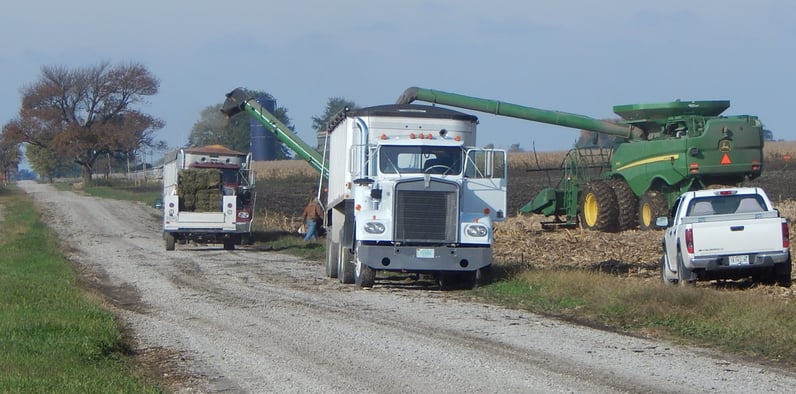During harvest, you have a huge amount of work to do within a very short window of time. Put yourself in the best position possible for a safe harvest season by being prepared. Here are some safety tips to think about before harvest and field operations.

Lights, Reflectors and SMV Signs
Harvest season means more farm vehicles will be sharing the roadways with other vehicles. Anything you can do to make your equipment more visible on highways protects you and the public. It’s wise to put additional reflective tape, reflectors and lights on your equipment, especially on the outside edges. Simply put, the easier your equipment is to see, the less likelihood of being in a crash. Having an escort with flashing lights is also recommended. Additional reflective tape on tractors and equipment is a good choice for your safety when traveling at night. Many operations have a rule they won’t move equipment at night. Finally, don’t forget to have a SMV sign for all your equipment traveling the road. It’s a good idea to have one on the tractor and one on the equipment being towed.
Hitch Pins, Chains and Straps
Harvest safety includes evaluating your hitch pins and safety pins. Do you have enough of the right sized pins for all of the equipment you plan to tow? Keep a supply of replacement safety pins accessible so there is always the right safety pin to go with the properly matched hitch pin. Remove from service any pins that show stress and excessive wear. Discard any homemade pins as they have not been tested for strength and wear.
Inspect chains for bent, cracked, twisted, broken or stretched links. There should be no chain knots and no replacement links. The grade strength of hooks should match the grade strength of the chain. Take out of service any chains that appear to have any defects. Also inspect web straps for damage, wear and abrasion. Bent, cracked, twisted or damaged fittings and buckles compromise strength as do cuts, burns, broken stitching, frays, holes and knotting.
360° Walk-Around
A simple habit can ensure you have a safe drive and just takes a few minutes. When you walk around your vehicle and any towed equipment, look for things that will affect safe travel such as tires, fluid leaks, hitching components, lights and a secured load to name a few. Make sure all equipment materials are in the proper place and nothing could fall and strike another vehicle. Look around your vehicle and observe nearby obstacles such as other parked vehicles, equipment and obstacles. Finally look for people that are in the area so they are clear…especially children. Pay attention to the details and make it the last thing you do before you take off.



